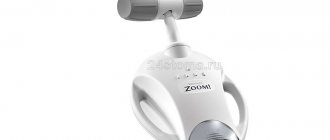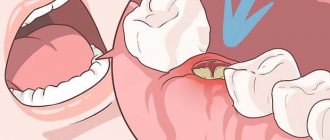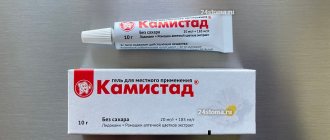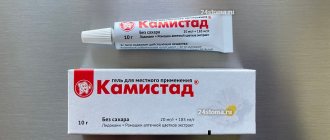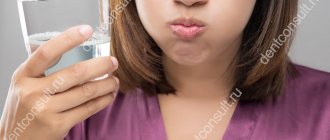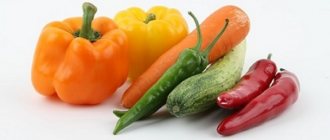In any book of folk recipes you can find medicinal remedies based on garlic. Even in ancient times, people knew about the bactericidal properties of this vegetable with a special spicy taste. And connoisseurs of good traditions still use it to treat all kinds of ailments. Those who understand the basics of grandmother’s “potions” assure: garlic will help with toothache much better and faster than pharmaceutical drugs: it will kill germs and alleviate suffering.
Having become acquainted with garlic recipes of traditional medicine, a person will discover an interesting fact: garlic is used for dental treatment in a variety of forms. It can be finely cut or rubbed for compresses. A piece of vegetable can be placed in a carious cavity. It can also be used to prepare an effective tincture for any type of home therapy: rinsing, rubbing, or ingesting. Even a clove of garlic applied to the wrist has miraculous powers, healers convince.
How true are these facts? This needs to be sorted out
Garlic and a bad tooth – are they compatible?
If you take an ordinary clove of garlic and subject it to chemical analysis, then among the substances detected there will not be even a single mild analgesic. Therefore, you should not see a garlic clove as a pharmaceutical tablet against acute pain and expect an immediate miracle when applying it to a tooth.
Garlic contains a lot of medicinal components, including for toothache.
But there are about 400 (!) active medicinal components, among which the most useful for a diseased tooth are:
- Allicin
- Phytonutrients
- Phytoncides
These elements are the enemies of any pathogenic microflora, which is always present in the patient’s body. By using garlic for dental treatment, a person simultaneously ennobles all systems of the body and improves his immunity.
Allicin is especially needed in the fight against microbes, as it kills all kinds of viruses, bacteria, and fungi. Moreover, this component is not an “innate” free element in the plant. It appears when vegetable cells are subject to mechanical damage - vacuoles enter into a chemical reaction with the cytoplasm, resulting in the formation of allicin.
So why does garlic relieve pain? It is easy to guess that the bactericidal talent of this vegetable contributes to a sharp decrease in harmful microflora. As a result, the source of inflammation, which causes pain symptoms, for example, with inflammation of the gums, calms down.
Therefore, the answer to the question of whether garlic eliminates pain itself is: no. It only acts on certain root causes of this pain, helps to stop inflammatory processes and thereby alleviates the patient’s condition. But garlic can provoke acute pain if used incorrectly.
How people harm themselves
Allicin is a very active substance, which means it is aggressive. Prolonged contact with the component can easily cause a burn to the oral mucosa.
And if we talk about diseased teeth, then it is very dangerous to put pieces of vegetables into deep carious holes - after all, the pulp (dental nerve) is still alive and suffers even from mild irritants, such as a breath of cool wind or regular brushing of teeth. What happens if a destructive drop of allicin “touches” the inflamed pulp?
With deep caries, the cavity in the tooth can extend almost to the pulp chamber itself, in which a ball of blood vessels and nerves is located. A tooth with caries always hurts sharply - this indicates that the pulp has not yet died and reacts to any irritants. Therefore, the dentist always removes this tangle, which has caused the patient’s sleepless nights.
Dentists say that when garlic hits the nerve of a diseased tooth, a thrill is guaranteed.
The person himself forever remembers that unbearable feeling when a piece of sweet or salty food landed in a carious hole... But for some reason he thinks that a sharp piece of garlic will somehow have a different effect on the dental nerve, and shoves it into the cavity. In this case, thrills are guaranteed.
Sometimes toothache is a consequence of inflamed gums. In the resulting pocket in the gums, pieces of food accumulate and decompose. And people rush to apply a piece of garlic to the source of pain. They heroically endure the burning pain, believing that this is how “garlic works,” and meanwhile a burn forms on the gum. Its damage is not inferior to complications after inflammation, although the bacteria could have been killed in ways that were not so blasphemous to oneself. Among them is simple clean water with salt. It perfectly washes away food debris, pus and harmful microbes from the gum pocket and carious cavity. At the same time, such rinsing does not cause burns.
Attention! Sometimes patients are especially patient and steadfastly withstand the acute pain from a piece of garlic in a carious hole, and a day later the pain suddenly disappears... This is not a reason for joy at all. Just a dose of allicin killed the pulp, and the dead tissue of the nerves and blood vessels will soon begin to decompose in the tooth. If the resulting pus does not find a way out, everything can end very badly.
Folk remedies will never replace proper treatment at the dentist!
Beneficial features
Garlic owes its antiseptic effect to allicin in its composition. The substance is characterized by pronounced fungicidal and bactericidal properties.
Allicin in garlic is formed due to a mechanical effect on the structure of cells; it is not contained in the product in its free form.
The chemical composition of garlic is rich in sulfide components . Their action is detrimental to staphylococci and some types of fungi. Thanks to these elements, blood clots are well absorbed.
In addition to sulfides, the product contains more than 100 chemical compounds , including zinc, selenium, and germanium. Phytoncides with high biological activity are perfectly combined with the enzyme lysozyme, fatty oils, magnesium, iodine, calcium, and B vitamins.
The analgesic effect of garlic is due to a decrease in the number of pathogenic microorganisms that cause the inflammatory process.
When garlic and salt are combined, it is possible to reduce the flow of pus in the area of the affected tooth. This tactic is accompanied by a burning sensation. The reaction to an aggressive product stimulates blood circulation in the oral cavity, accelerating the delivery of immune cells.
Garlic tincture or exposing healers
Among the folk remedies made from garlic for toothache, there is one simple recipe - garlic tincture.
The “potion” is very easy to prepare. Weigh out 100 grams of garlic, crush it or grate it, pour half a liter of vodka into the mass, then leave it to harden for 14 days. After which the healing liquid is decanted and rinsed in the mouth, or passed inside. As a rule, drinking garlic tincture is preferred primarily by connoisseurs of strong drinks, and not by real toothache sufferers. But tincture of garlic inside is a double load on the gastric mucosa: ethyl alcohol and allicin.
If the first option is more harmful than beneficial, will the second option, rinsing, help? Sometimes it really helps. Effective garlic phytoncides float in the tincture, which destroy harmful bacteria on the surface of the gums and somewhat relieve inflammation. Ethanol itself also has antiseptic properties and dilates blood vessels, which makes the pain subside a little.
Garlic tincture can help with gum disease
Thus, for ailments associated with gums, rinsing with garlic tincture can be effective. But ordinary sage/chamomile decoctions or oak bark tincture will have a similar effect. In addition, their “strength” does not need to wait 2 weeks. During this time, inflammation can already cross the boundaries of what is permissible and drive the patient to the hospital.
If toothaches are caused by deep caries, there is no point in waiting for the garlic miracle potion to infuse - it will simply be useless.
How to protect your immune system and recover from COVID-19?
Kamila Tuychieva
Head of the reception department of the K+31 clinic, general practitioner
– In the spring, many people notice a loss of strength and fatigue. As a rule, this is due to sun deficiency after the winter months and a lack of vitamins. As a rule, proper nutrition, vitamin complexes according to indications, breathing practices, moderate physical activity and good sleep help strengthen the immune system in this case.
It is more difficult for those who have recently suffered a coronavirus infection, which affects many vital organs and systems. Unfortunately, these are not only the lungs, but also the brain, cardiovascular, central nervous system, etc. Therefore, doctors often identify post-Covid symptoms such as asthenia, anxiety, muscle pain, muscle weakness, hair loss and others .
In each individual case, these symptoms vary in duration and severity. It all depends on how the disease progressed, how the person eats, what kind of immunity he has, and whether he leads an active or passive lifestyle. Each specific patient who has recovered from COVID-19 and has post-Covid symptoms is given certain recommendations from doctors for rehabilitation after coronavirus. The doctor will also recommend vitamins after Covid. Recovery from coronavirus occurs individually, but there are several universal recommendations on how to recover from coronavirus as an adult.
Recommendations for recovery from COVID-19
Asthenia
COVID-19, affecting the central nervous system, also causes asthenia, a condition accompanied by weakness, lethargy, and general malaise. Those who have recovered from coronavirus infection in severe and moderate form require mandatory comprehensive rehabilitation under the supervision of experienced specialists. One of the components of this rehabilitation is therapeutic exercises, which help with muscle pain, muscle weakness, and also stimulate respiratory function.
Anxiety and irritability
After treatment, feelings of anxiety, irritability, aggression or depression may persist. In this case, you should seek the help of a qualified psychologist, especially if the changes affect the quality of life and interaction with others.
Hair loss
The transferred coronavirus can also provoke the occurrence of so-called diffuse alopecia - this is when uniform hair loss is observed. In severe cases, rapid loss occurs, and in milder cases, with greater frequency than usual. The exact data still varies, but, according to some experts, hair follicles do not die, but only fall asleep, so it is possible to restore hair thickness if you consult a qualified doctor who will prescribe the correct treatment.
How to boost immunity after coronavirus?
COVID-19 is far from the only viral disease that requires long-term recovery. For example, rehabilitation after infectious mononucleosis, herpes viral infections takes a long time, even severe forms of habitual sore throat, influenza or ARVI sometimes leave unpleasant consequences. Moreover, long-term recovery after coronavirus is usually associated not only with the virus itself, but also with the individual immunological characteristics of the body.
To strengthen the immune system in the spring, we can recommend measures that are aimed at the general rehabilitation of the body. But before doing anything, it is advisable to consult with your doctor.
For those who have recently suffered from coronavirus, such a consultation is necessary, because a specialist will select an individual rehabilitation program and tell you what vitamins to take after Covid. If the coronavirus infection is severe, comprehensive medical care may be required with the involvement of highly specialized specialists - a cardiologist, pulmonologist and others.
Balanced diet
- It is advisable to exclude sweets, confectionery, and yeast products. Replace baked goods made from premium flour with bread made from durum wheat and whole grains.
- It is useful to eat sprouted grains - they are a storehouse of nutrients.
- It is recommended to replace dairy products (milk and cottage cheese) with lactose-free products during the recovery period; you can drink plant-based milk. This is explained by the fact that coronavirus infection usually affects older people. As you age, your body has a harder time digesting dairy products because the older you are, the less enzymes you can produce that are needed to digest lactose. In addition, after an illness, the human body is weakened, so it does not need extra stress on the digestive system.
7 myths about milk and which of them are true? Read HERE
.
- Meat, poultry, fish. Remember that white meats (rabbit, turkey breast) are better digestible than red ones. If you are not allergic, eat fish. Use green vegetables as a side dish.
- Vegetables. Limit vegetables from the nightshade family (potatoes, eggplants, tomatoes).
- Include foods rich in vitamins C and D in your menu. Vitamin D during coronavirus is a powerful immunoregulator, and C can strengthen the barrier function of the respiratory system. Oranges, black currants, and cranberries are rich in vitamin C. Vitamin D can be obtained from appropriate dietary supplements - up to 50 micrograms of vitamin D per day is required. Vitamins are a good way to restore the body after a mild form of coronavirus.
How to take vitamin D correctly - HERE
.
- Coffee can cause an allergic reaction; it is recommended to replace it with chicory, fireweed, green or black tea.
The main principle of nutrition during the recovery period after Covid is to leave the table with a slight feeling of hunger. In addition, try to eat often (5-6 times a day) and in small portions. Don't eat at night! The fact is that the intestinal immunity “switches on” in the evening and at night, and digestive enzymes are most active in the morning.
Take care of restoring intestinal microflora. Antibiotics can also be used in the treatment of coronavirus infection; the intestinal microflora suffers from this. Therefore, it is important to correct intestinal dysbiosis with probiotics and prebiotics (plant fibers).
Physical activity
The simplest and most accessible type of physical activity for most is daily walks. Start with half-hour leisurely walks. Then gradually increase the time and pace of walking. It also wouldn’t hurt to ask your doctor to choose a set of exercises for you that you can do at home if the weather outside is not very good.
Garlic compress on the wrist - medicine or superstition?
When the ancestors put this vegetable on their wrists, what were they thinking? Those who have never dealt with traditional medicine see something superstitious in this method. In their opinion, only magic spells can be more absurd.
Garlic compress (popular name “Siberian recipe”) is made as follows:
A clove of garlic is thoroughly crushed until it turns into pulp. The mass is then placed on the area of the wrist where the pulse is felt. Secure the medicine with a strong, thick bandage. Some people don’t crush the garlic, but simply cut a clove in half and press the cut side to their wrist. Treatment nuance: if a tooth hurts on the right side, then a compress is applied to the left wrist, and vice versa.
It is interesting that to this day no one can explain what the effect of such a remedy is. Proponents of traditional medicine are trying to defend their positions, but their evidence base also branches into several different “guesses”:
- Different points of the human body are connected to nerve nodes, and if you apply garlic mass to the wrist point, you can somehow block the path of pain signals to the brain.
- When garlic irritates the sensitive skin of the opposite wrist, a strong burning sensation begins, which distracts the patient from the tooth and the side on which it is located.
- Garlic phytoncides penetrate through the skin into the circulatory system and dull the perception of pain by the entire body.
There are many followers of garlic compress on the wrist.
As can be seen from the evidence points, garlic on the wrist is a very versatile solution to the situation. By the way, this method has a lot of supporters, although it usually ends with the person simply receiving an additional source of pain to the existing one.
Reviews about the treatment of toothache with garlic
If you experience acute toothache while hiking, then folk remedies will help. Surely you have garlic with you, you don’t need to eat it, just cut it, wrap it in gauze or a handkerchief and put it on the wrist of the hand on which the tooth hurts, tie the bandage tightly.
Basil
Also at the same place, cut a clove of garlic for 1-1.5 hours (longer - burn), with a plaster. (tested on myself several times)
Also a piece of garlic, “no-shpa”, right in the “hollow” on the tooth.
Pooh
